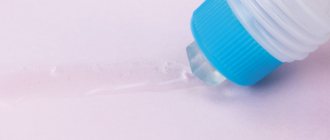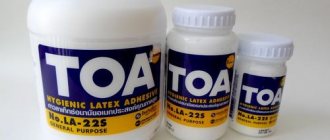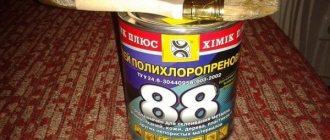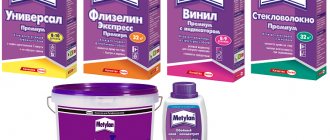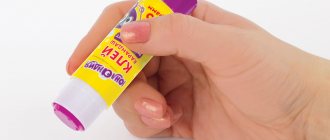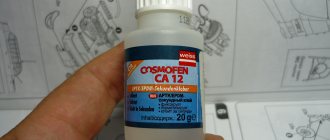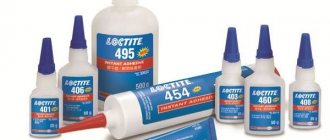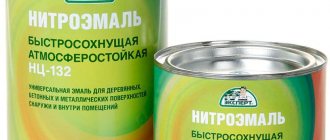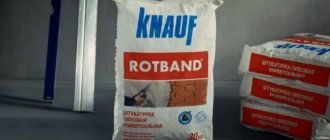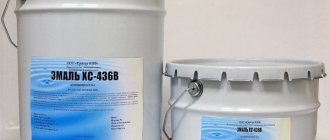Hello! I'm so glad you stopped by! I’ve long wanted to write about glue for scrapbooking, but I couldn’t find the right words. In fact, the topic seems very simple, but this is far from the case. We want the paper to hold up, for the leatherette to stick together, for the rhinestones and tops to fit tightly... But unfortunately, there is no such universal remedy, or at least I haven’t found one. That's why I use different scrapbooking glue for different materials.
Today I’ll tell you about the most popular types of glue for scrapbooking. This will be more of a review than an article. Please, if your opinion does not coincide with mine, do not throw stones at me. Write everything you think in the comments and we will discuss this topic in detail.
General rules that will help distinguish good glue from bad
To ensure that the creative process brings joy, and its result does not fall apart at the first opportunity, you need to choose an adhesive that is suitable for solving your problem.
Agree, in children's creativity you need glue that is at least safe, and in the office it definitely should not have a pungent odor.
But no matter what your goals are, you are unlikely to be interested in buying bad glue. Let's take a look at the general rules that will protect you from such a mistake.
A quality product must have:
The right consistency. It is inconvenient to work with thick ones, because it is difficult to apply and the consumption will be large. If the consistency is liquid, then we can end up with paper soaked through with adhesive and deformed when drying.
Shelf life sufficient for repeated use. Expired glue is unpredictable in operation.
It may not have the properties we need, it may form lumps, or separate. Adhesion sufficient to firmly bond the materials you intend to work with.
No pungent odor. It is better to glue using safe means. Especially if the process is carried out indoors. Use toxic substances only as a last resort when other options fail.
Think about the comfort of your future work. Need to glue large surfaces? It is more convenient to apply glue with a brush. For joints, products with a spout are certainly better suited.
Undoubtedly, work looks neater when there are no visible glue smudges or stains in the places where it was applied.
That is why, with the same adhesive properties, it is better to choose a colorless analogue.
Well, if the glue does not turn yellow over time and does not spoil the result, it will be an ideal solution for products that require a lot of time and effort to create.
Glue composition
Liquid glass was first produced experimentally in Germany. The technology for its production turned out to be simple and accessible, and the natural raw material was cheap and widespread - silica SiO2.
Bavarian Chemist Johann Nepomuk von Fuchs in 818 was able to obtain an aqueous-alkaline solution of polysilicates:
- Sodium – Na2O(SiO2)n;
- Lithium Li2O(SiO2)n;
- Potassium – K2O(SiO2)n.
Natural deposits of natural silicates necessary for the production of liquid glass are ubiquitous. They can also be synthesized artificially. The availability and prevalence of office glue is explained by its low cost and wide range of applications.
Natural deposits of natural silicates necessary for the production of liquid glass are ubiquitous.
Popular types of glue suitable for working with cardboard and paper
First, let's look at three hits that are most often chosen by both amateurs and professionals. At the same time, we’ll figure out how they differ.
Glue stick
A popular classic, adored by both office workers and kindergarten teachers. Easy to use for adults, suitable for children too. Lightweight, economical in use, and when used correctly, does not leave marks on fingers or paper.
Apply evenly and in a thin layer. Compact, easy to store, takes up little space, and is inexpensive.
It would seem beautiful. However, it is still better to use such glue for working with small parts, applications, and simple manipulations with paper.
With its denser types, for example, when modeling complex structures made of cardboard, a glue stick will not cope.
A bit weak. The joints may come unglued at the wrong time, and all the work will go down the drain.
For more substantial and durable paper products, it is better to look for something with more serious characteristics.
PVA can do anything
For example, polyvinyl acetate (PVA)-based glue works great on thick paper and even cardboard. Very good when used in papier-mâché technique.
It has excellent properties that allow you to create crafts from a variety of materials. Fabric, feathers, wood, leather.
No problem! The main thing is to take into account that PVA has varieties. So PVA-K refers to office adhesives. It makes it easy to glue any type of paper, including photo paper. PVA-MB has advanced characteristics and richer capabilities.
In fact, this is already a universal glue. In addition to paper and cardboard, it allows you to work even with glass and metal surfaces.
Despite the fact that outwardly PVA is a yellowish or white liquid, it leaves no traces when dried.
The smell is weak, non-toxic, explosion- and fireproof. When storing, be sure to close it tightly, otherwise a “plug” will form, which makes further use difficult.
That is why PVA is available in small packages with a brush or nozzle with a spout.
It is recommended to shake thoroughly before use. It takes 3-5 minutes for the materials to be glued to set, but complete drying occurs within a day.
Super glue
Something that can almost always be bought not only in specialized stores offering repair products, but also in hardware stores and even grocery stores.
“Moment”, “Second” are perhaps the most famous representatives of this segment. The name speaks for itself. This glue can handle almost anything. It sticks everything together and you have to work with it very carefully.
Such an assistant should be kept as far away from children as possible. The cyanoacrylate base is the key to almost instant high-quality adhesion.
Firmly grips porous materials, rubber, wood, plastic, metal, fabric and more. And fingers, if you don’t take into account the safety rules (hands cannot be washed with water, you need at least acetone).
Bonding provides the most reliable, but is toxic, as evidenced by the sharp, chemical smell. The room must be ventilated.
Not recommended for working with materials containing cellulose. Enters into a chemical reaction with a large release of heat. This also applies to the clothes you are going to wear to work.
The paper sticks and does not deform. It takes skill to get a quality result.
Adhesive suitable for photographs
First of all, pay attention to the glue sticks sold in stores that say “for photos.”
Their adhesive strength is higher than that of classic ones in the same packaging. At the same time, they have the same application advantages. Apply in a thin layer, economical, easy to use. Use this pencil to walk around the perimeter of the photo and straight into the album. Nothing complicated. Erich Krause, Ranger, Aleene's - any of these brands will not disappoint the consumer.
There is glue similar to PVA. It's called Acid-free Tacky Glue. After working with it there are no stains, it does not turn yellow, and it is optimal in consumption, despite its liquid consistency. It’s convenient to use – it comes with a nozzle spout.
UHU Creativ, another high-quality glue for photographs, is very similar in structure to Moment, but unlike it, it is non-toxic and does not have a strong chemical odor.
UHU Creativ allows you to attach photos not only to paper, but also to skin. You don't have to worry about deformation of even thin paper.
Also check out UHU Twist & Glue. Although its texture is runny and it takes longer to dry, it is guaranteed not to spoil either paper or photographs. If you are not allergic, you can use Moment Crystal glue.
It can be called harmless only after drying, but during operation this product is quite toxic.
Contains acetone, so the room must be ventilated. Suitable for gluing rubber, plastic, leather, paper. It's also easy to handle photographs.
Tacky glue
It is very similar in appearance to PVA, but does not have the property of spreading and leading to paper. White in color, becomes transparent after drying. By the way, it smells exactly like PVA. Very good for scrapbooking. They can be used to glue paper, lace, ribbons, cardboard and photos. Its consumption is minimal. Its price is not small (about 200 rubles), however, it lasts for a long time.
I use it quite actively, but it doesn’t stick to leatherette very well, so I have to take advantage of it.
What other options are there for gluing cardboard and paper?
If you need to glue durable paper, you can use glue containing acrylic.
It comes in the form of a spray, so it is practical, easy to apply, and does not get your hands dirty. It must be taken into account that a surface that is too thin will not work, as there is a risk of deformation of the material.
It turns yellow over time, so it should not be used on the front side of a future structure.
Stationery silicate glue with increased adhesion (“liquid glass”) is also suitable for such purposes. When hardened, it becomes a transparent mass. It is widely used to create three-dimensional products using the papier-mâché technique.
You can glue not only paper, but also cardboard. However, the seams become brittle over time and may come apart. Should not be used for working with photographs. Over time, the image at the gluing site will fade and blur.
Another little-known way to work with paper is gum arabic glue. Contains water and gum arabic. Reliably glues, is safe for humans, and has a high degree of adhesion. It is rarely found in finished form.
But it’s quite easy to make at home by mixing 10 g of gum in 20 ml of water. This is what some craftsmen who are familiar with this technology do.
You can use wood glue - reinforced PVA or based on casein, flesh, fish or bone meal.
Although this composition may have an unpleasant odor and resemble jelly, the product does not turn yellow and does not crumble over time. It grips paper and cardboard well, you can make crafts, glue fabric.
Super glue
Superglues are a line of cyanoacrylate adhesives. This includes “Super Glue”, “Second”, “Super Moment”, etc. If you create crafts from different materials, which include not only paper and cardboard, but also iron, plastic, rubber, wood, etc., then you won’t be able to get by with traditional office glue; you’ll have to resort to heavy artillery.
Currently, there are many universal adhesives that instantly hold together any materials. “Superglue” comes to the rescue like a lifesaver, but you shouldn’t give it to children. The composition has the highest adhesion, instantly sticks, and is able to quickly and firmly glue fingers. And some brands are toxic upon contact with skin. Therefore, it must be used very carefully.
The four types of paper glue listed are the most convenient and necessary when doing creative work.
Which glue is better to choose for decoration?
There is such an assortment of glue in stores that it makes your eyes wide open. So which one is more suitable for creativity with paper? Pay attention to the following brands:
Glossy Accent by Ranger. Transparent adhesive varnish consistency. Used if a glossy finish effect is required. Wide possibilities.
It will connect volumetric parts made of cardboard or paper, and acrylic, plastic, metal, and even bulk materials such as glitter or beads.
It is easy to work with and non-toxic. Available with a thin spout, which makes consumption economical.
Allows you to apply a layer of any thickness, despite the thick consistency. A special composition is suitable to imitate water drops. Ideal for scrapbooking. Glues paper, cardboard, any type of leather, cork, wood, fabric.
It takes a day to dry completely, 20 minutes is enough for the surfaces to stick to each other. For bookbinding we recommend specialized glue “Professional Binding”.
Decor Factory released this work of chemical art to facilitate the creation of books, diaries and other similar products from leather, textiles, paper, and cardboard. The elastic layer protects the binding from damage and extends its service life.
Typographic is another specialized glue. Suitable for scrapbooking, notepads, boxes, and bookbinding. Fastening blocks, gluing spines, gluing endpapers, doing other work with cardboard or paper - he can handle it.
American Tacky Glue Original glue has been pleasing consumers with its quality for over 50 years. Sets quickly. It has a sticky and thick texture. So durable and reliable that it has proven itself only from the best side. Applicable in creativity and everyday life.
Works well with all types of paper, felt, wood, and some fabrics. Safe (non-toxic), does not turn yellow even after several years.
Making PVA glue at home
Before you make PVA glue, you will need to prepare a certain list of its ingredients. In particular, for the production of 1 l. composition you will need:
- 100 g of wheat, high-quality sifted flour.
- 20-30 ml of ethyl alcohol (technical alcohol can be used).
- 5-10 g of finely dispersed (photographic) gelatin.
- 5-10 g glycerin.
Homemade PVA glue for household needs Source sdelai-lestnicu.ru
How to make glue for paper and cardboard yourself
Knowledgeable people say that it is not necessary to go to the store for what you can do at home. To create a strong glue, all you need is water and potato starch.
We will also need a stove, since we are going to cook it. So, take a container, pour starch into it, add cold water.
There should be enough of it so that after mixing you end up with a viscous mass. We put the resulting semi-finished product on the fire, add boiling water, mix well again and wait for the mass to begin to boil.
Once it boils, remove and cool, remembering to stir regularly.
Otherwise there will be lumps that we don't need. The mass should have a gelatinous consistency. If you need to increase the adhesive properties, you can add borax in a proportion of 25 grams per 1 liter of homemade paste.
There is another recipe. Soak a packet of gelatin in water.
After 5-6 hours, pour 1 glass of water into a saucepan or ladle. Add prepared gelatin and one spoon of flour to it.
The composition must be cooked in a water bath until it acquires the consistency of thick sour cream.
After this, remove the container from the heat, add 1 tablespoon of glycerin and 1 tablespoon of alcohol into the mixture. Ready!
And the third recipe. We buy solid wood glue. Whether you take it in powder or as a bar, it doesn’t matter. Dilute the glue with cold water and place in a water bath. Stir vigorously until the mixture boils.
As soon as bubbles appear on the surface, remove from heat. Cool and use as intended.
You have just created your own glue. It is completely ready for use and is not inferior to store-bought counterparts.
And who is the master now? Of course, you! Now you can safely create a vintage look, restore antique dolls or Christmas tree toys made of cotton wool.
Packaging, packaging forms
Today, even children know what silicate glue looks like, although it is difficult to do without it in other sectors of the national economy. The predominance of beneficial properties and the availability of raw materials guarantee the demand for silicate composition in modern practice. The office supply departments offer a wide selection of office adhesive in the form of tubes, bottles and sticks.
Schoolchildren should know that the thick transparent suspension should not get into the eyes or hair. However, traces of transparent stationery glue can be easily washed off after classes with running water.
The release form is designed in such a way that the gel-like liquid stains your hands as little as possible. Therefore, Office Space glue and other brands are offered in plastic bottles, in the form of rods or pencils.
Liquid silicates can be stored in a glass container with a tight-fitting lid, away from small children.
The release form is designed in such a way that the gel-like liquid stains your hands as little as possible.
Bonus from builders for cooks: food glue
Nowadays, many people are fond of home baking and decorating it with sweet figures and various flowers made from edible mastic. But in order for all this beauty to retain its shape and stick to the surface of the cake, special food glue is required. Of course, you can buy it at the store, but before you go looking, try making glue at home. There are several recipes for this.
Recipe No. 1: based on starch
Components:
- starch - 4 tbsp. spoons,
- water – 1 glass.
Preparation:
- Prepare a thick starch jelly and leave it in a warm place for several hours. It should turn into a viscous mass.
Recipe No. 2: sugar glue
Components:
- 250 g granulated sugar,
- Glass of water.
Preparation:
- Prepare a slightly undercooked caramel toffee. It should remain in the form of a stretchy liquid.
Casein glue for leather, wood and even puzzles
A good option for gluing wooden and leather products, as well as other materials, is casein glue. It can be successfully used in surface treatment for puzzles.
Stage 1: isolation of casein from cottage cheese
To prepare it at home, the cottage cheese must go through a defatting process. To do this, you need to soak it in a soda solution (1-2 tablespoons of baking soda per liter of water) for 15-20 minutes. Then it is thoroughly washed with running water, wrung out and dried until hard. Next, a powder is prepared from it. This is dry casein.
Stage 2: prepare glue from dry casein
dry casein
To prepare glue from casein, you need to pour the powder into any container (preferably flat) and add water in a thin stream, stirring constantly. Take two parts water to one part casein powder. You should get a thick mass. The most crucial moment in preparing casein glue is its further mixing until it becomes homogeneous. The better the mass is mixed, the higher the quality of the glue. This procedure will take at least 30 minutes. But the process can be speeded up if you use a regular mixer. This is an excellent wood glue. It has excellent leather bonding properties and is well suited for shoe repair. The disadvantage of this glue is that it must be used within two to three hours, after which it hardens and becomes unsuitable for further use.
How to prepare the solution
You can prepare the office composition yourself. For this you will need:
- Potassium and sodium silicate polymers;
- Silicic acid;
- Distilled water.
When working with chemicals, use protective gloves, goggles and a respirator. Work should be carried out in a room with forced ventilation, away from children and pets. Use a long wooden stick to stir.
Preparation method:
- In a deep container, measure and mix the potassium and sodium polymer components in equal proportions. Do not fill the container more than 1/3 of the way.
- Dilute the acid with water to 10% concentration and add to the silicate mixture. Always pour acid into water.
- Heat to a temperature of 110–120˚С for 10–15 minutes, stirring continuously.
- Remove from heat, cover tightly and leave to cool at room temperature.
After cooling, the solution can be used as a regular stationery composition.
